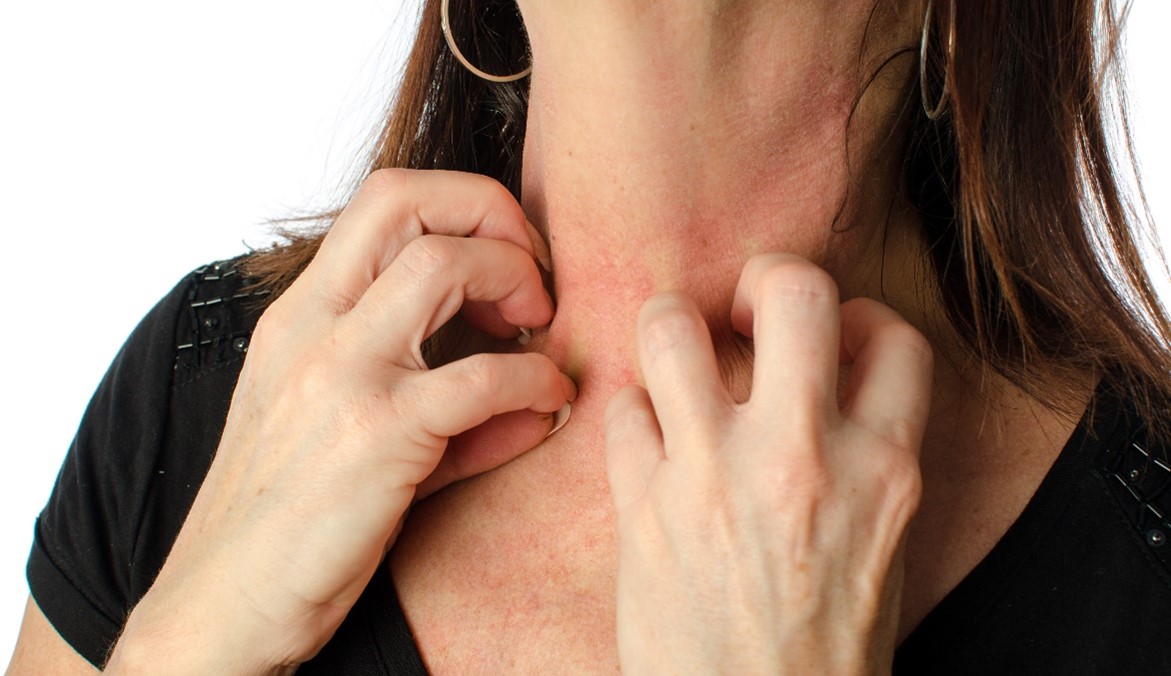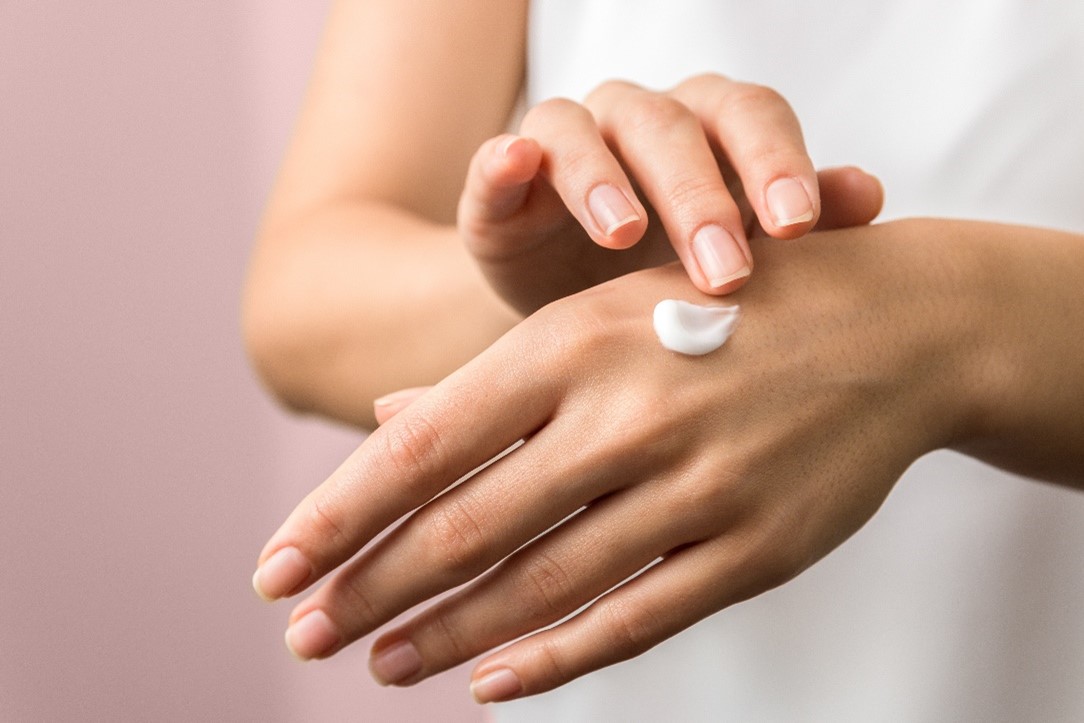Chronic Kidney Disease (CKD) and end-stage kidney disease (ESKD) do not just impact your internal organs; they can also have a profound effect on your skin. One of the most distressing skin symptoms is persistent itching, also known as chronic kidney disease-associated pruritus (CKD-aP). This condition can be more than a mere nuisance; it can disrupt sleep, daily activities, and overall quality of life.
In this blog, we will explore the connection between kidney disease and itching, the reasons behind it, and how to manage this uncomfortable symptom.
Why Does Kidney Disease Cause Itching?
Itching, or pruritus, is a frequent issue in individuals with advanced CKD, especially those undergoing dialysis for ESKD. Although the precise cause of CKD-associated pruritus (CKD-aP) remains unclear, studies suggest it results from a combination of several contributing factors:
- Buildup of toxins: Damaged kidneys cannot efficiently filter waste products, leading to uremia, a condition that can irritate the skin.
- Imbalance of minerals: Disrupted calcium, phosphate, and magnesium levels in the blood can contribute to itching.
- Nerve dysfunction: Changes in nerve signaling, specifically an imbalance in opioid receptors, can increase the itch sensation.
- Immune system activation: Chronic inflammation caused by CKD can trigger an immune response that contributes to itchy skin.
- Dry skin (xerosis): Kidney disease often leads to reduced function or shrinkage of sweat glands, decreasing skin moisture and contributing to dryness.
What Does Kidney-Related Itching Feel Like?
CKD-aP varies greatly from person to person. It can be confined to specific areas or spread across the entire body, with intensity ranging from mild to severe. Some patients describe it as:
- A constant “pins and needles” sensation
- Sudden, overwhelming itching episodes triggered by touch, stress, or temperature changes
- An itch so intense it causes bleeding or scarring due to scratching

Visible Signs on the Skin
Itching is often accompanied by other skin symptoms, especially in later stages:
- Extremely dry, scaly skin – Often feels tight, cracked, or flaky.
- Scratch marks – Repeated scratching leads to raw or bleeding skin, scarring, or thickened areas.
- Firm, itchy nodules –These can be intensely irritating.
- Color changes – Skin may appear pale, grayish, or yellowish due to toxin buildup.
- Rashes and blisters – Dome-shaped bumps, sometimes merging into raised patches, can develop in ESKD.
- Calcium deposits – Appear as firm lumps under the skin, especially around joints.
- Nail changes – These may include pale-colored nails, white bands, or “half-and-half” nails, where the upper portion appears white and the lower portion has a reddish hue.
How Itching Affects Life
In a recent survey, over 60% of people on hemodialysis reported itching as “somewhat intense,” and a quarter described it as “extremely intense.” The impact can be so significant that patients miss or cut short dialysis sessions. Itching can also lead to:
- Sleep disturbances
- Fatigue
- Anxiety or depression
- Increased risk of infections from broken skin
When to Seek Help
It is essential to speak with your healthcare provider if you experience persistent itching. Often, CKD-aP is underreported or dismissed as a minor concern, but proper treatment can make a significant difference.
Your nephrologist might collaborate with a dermatologist to help manage and treat skin-related symptoms more effectively. The diagnosis often starts with your description of the itch, followed by a physical examination and lab tests to rule out other causes like liver disease or allergic reactions.

Managing and Treating CKD-Associated Pruritus
While there’s no universal remedy, various treatment approaches may offer relief:
- Skin Care and Moisturizers
- Use emollients (moisturizing creams) regularly to combat dry skin.
- Avoid hot showers and harsh soaps; opt for mild, fragrance-free products.
- Cold showers and cool compresses may offer temporary relief.
- Medications
- Using topical treatments with anti-itch or anesthetic properties.
- Taking antihistamines for nighttime itching (may cause drowsiness).
- Nerve-pain medications like gabapentin or pregabalin can reduce nerve-driven itching.
- Phosphate binders and treatments for high parathyroid hormone (PTH) may help control underlying mineral imbalances.
- UVB Phototherapy
- This light therapy can reduce inflammation and is particularly useful for those not eligible for a kidney transplant.
- However, it is not suitable for everyone, especially those with lupus or taking immunosuppressants.
- Difeelikefalin
- This is a new FDA-approved medication given intravenously during dialysis.
- It targets the nervous system imbalance responsible for itching.
- It has shown promising results for those with ESKD.
- Experimental Therapies
- Taking omega-3 and omega-6 fatty acids.
- Using charcoal and cholestyramine to bind gut toxins.
- These options may offer relief but should be discussed with your doctor.
Living Well with CKD-aP
Itching due to kidney disease can feel isolating, but you are not alone. Many patients have found relief by working closely with their care team and exploring multiple treatment options.
Connecting with others through support groups or online communities can also provide comfort, tips, and encouragement.
Preventing Itching: Early Detection is Key
The most effective way to prevent skin complications related to CKD is through early detection of kidney disease. Routine blood and urine tests can detect kidney issues before symptoms arise. Screening is especially important for those with:
- Diabetes
- High blood pressure
- Age over 65
Early management of CKD can slow its progression and reduce the risk of pruritus and other complications.
Itching may seem like a small symptom, but for those with chronic or end-stage kidney disease, it can be a daily struggle. Fortunately, there are ways to manage it, and you don’t have to suffer in silence. From proper skin care to innovative medications, relief is possible. Speak up, seek help, and take an active role in your kidney and skin health.

